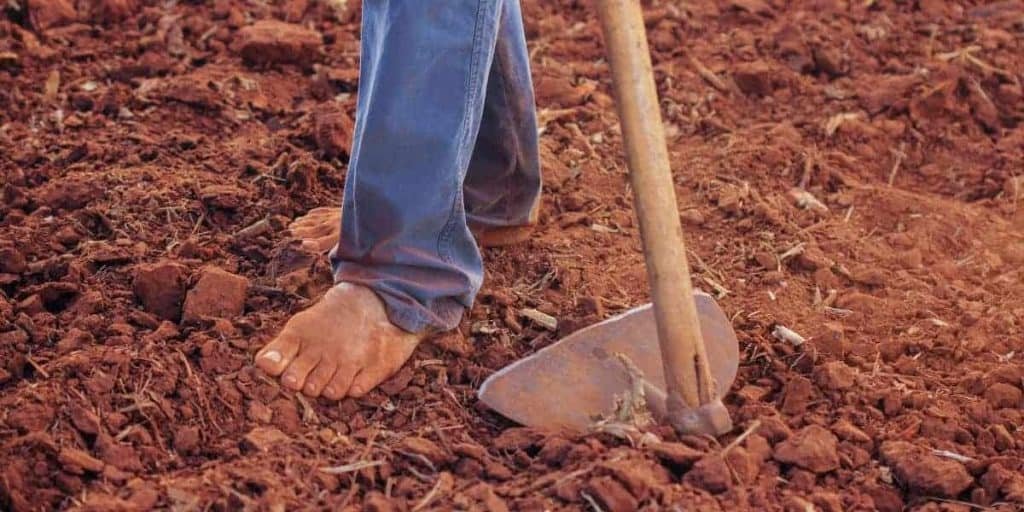Why urban farming?
Why urban farming? You’ve probably heard the term the end of suburbia before. In fact, a very well-known film was actually made about the whole concept.
The basic premise is that as fuel prices increase, living in the suburbs will become less economically feasible for average North Americans; the cost and time it takes to drive into the city for work will outweigh the benefits of living in the suburbs, and this will cause their imminent collapse. Hence the term, the end of suburbia.
You can look at that in two ways:
- The decline of real estate values and mass exodus from the suburbs will turn them into ghost towns.
- There is a huge opportunity to repurpose these places into modern day, self-reliant farming communities
We will show you how option #2 is possible.
Let’s look at some facts. Right now in the US, there are 40 million acres of lawn. Between 30% to 60% of the fresh water in cities is used to water those lawns, and 580 million gallons of gasoline are used to mow them.
When we factor in all the costs it takes to maintain a lawn— such as watering, mowing, weeding and manicuring— it’s easy to come to the conclusion that a lawn is nothing but a cost center, one that a lot of North Americans simply cannot afford.
But, what if we changed our thinking about lawns? We can tackle two huge problems:
- Lawns are unsustainable in many ways
- Access to land is a major barrier for most young people who want to enter the agricultural sector
and create one great solution. Lawns, particularly in suburbs, offer great opportunity for new farmers because:
- Land is abundant. The average home in the US has an average of .2 acres of land. That’s around 8,000 square feet.
- Using land without owning it removes the idea that one must own land in order to be a farmer.
- All of that land sitting in lawns now becomes a great place to farm.
What if we could repurpose the suburbs to be the new frontier of localization? What if all of these suburban streets turned into areas for transition, reeducation and abundance? I believe this is not only a possibility but an inevitability.
There are a number of reasons why farming in the city is not only more profitable, but there are also a variety of reasons that make it very advantageous: access to markets, low start-up and overhead costs, better growing conditions with warmer climates and easy access to water.

Advantages of Being Urban:
Market Access
Market access has to be the single greatest advantage that benefits urban farmers. When you live and work in the city, you live and work in the market that you’re supplying. You don’t have to travel very far to sell your product, and for the most part, your product will sell itself. When I deliver to restaurants in the downtown core, I am a five-minute bike ride away from them. Not only is that a talking point that those chefs will boast about to their customers, but it is also a huge advantage to me as far as saving time and energy in transport.
Delivering product that was harvested just blocks from where it is consumed has huge marketing appeal. Our farmers market is a five-minute drive or ten-minute bike ride from our base of operations. One advantage to this, besides bragging rights, is that, if I sell out of one particular item during the market day, I can buzz home quickly on my bike and get more. I call this topping up, and I’ve done it many times. From my proximity to the market, in 30 minutes, I can ride home, harvest some greens, bring them back to the market and bag them up there. What other farmer has the ability to do that?
Low Start-Up and Overhead
Farming in city greatly reduces the barriers to entry because you no longer need to think about buying land: it’s available everywhere. If you can make enough income on small lots, you don’t need the heavy machinery and infrastructure that is required for farming in the traditional sense. Infrastructure is simple, small and cheap.
Better Growing Conditions
A city is always a few degrees warmer than the countryside. This is called the heat island effect. With concrete and buildings everywhere, the city will absorb heat during the day into all that thermal mass, and the heat will release during the evening. This is very noticeable during the summer: if you’re riding a bike or driving your car past an open field, you’ll immediately notice a drop in temperature. It’s because you’re leaving the thermal mass of the city that you feel that heat drop.
In the downtown of my city, I’m in climate zone 6b, and people just a mile and a quarter out are around a climate zone 5. That’s huge difference in frost-free days. In fact, I have at least 30 more frost-free days downtown than farms everywhere else in my area.
The other growing advantage is microclimates. When farm plots are surrounded by buildings, walls and fences, these can protect your crops from severe wind. Also, each plot will have it’s own set of unique characteristics, making some plots better for certain crops than others. This urban climate offers a nice diversity of growing conditions for your farm.

Pest problems do exist in the city, but when you’re farming on multiple plots, they can easily be avoided by simply running away. If flea beetle becomes a problem at one site, you can stop planting that crop there, and start it somewhere else. The pest can’t follow the crop around in the city because of its many obstructions and barriers. And weed problems just don’t exist in the way they do on rural farms. With barriers and obstructions, there are far fewer weed seeds blowing in from all angles. In the past, I farmed on two peri-urban plots where the neighboring properties were just open fields. The weed problems on these plots were day and night compared to the urban plots.
Access to Water
Accessible water offers a huge advantage when you compare rural to urban farms. So many farms in the countryside have to wait for water from a river during the spring, and that can delay crop production. Also, well water can become contaminated by neighboring farms or industries. Accessing water on urban lots is in most cases as simple as connecting to the faucet on a house. The water is clean and has ample pressure.
The Social Connection
Over the years, I have met a large number of my customers, simply because they walked by my farm plots. Every neighborhood where I have a plot, I have a different set of neighbors, just as if I were living on that street. By working in these garden plots over the years, I eventually get to know most of the people on that particular street. This is a very nice thing, as I end up making a bunch more friends.
I can’t tell you how many times on a weekly basis I’m visited at my market booth by neighbors from my farm plots. Not only do they become shoppers, but they end up bringing their friends too, who also become customers. There’s an old saying “A satisfied customer is your best salesperson.” For the urban farmer, it’s more like “Your neighbors are your best salespeople.”
One of the best advantages to having multiple locations is that you just have more potential to build social capital in more neighborhoods.
Social capital describes the relationships you build with people over time as a form of capital. Having good relationships with people can turn into many opportunities like favors, connections and influence. These rewards are like money you can save in a bank, except you don’t lose any economic value to income tax, sales tax or inflation.
No government official can steal social capital from you. It’s what you build with people by just making friends, sharing information and feeding the community!
Want to learn about homesteading? Check our category HERE.
Originally posted 2020-05-30 00:01:27.



